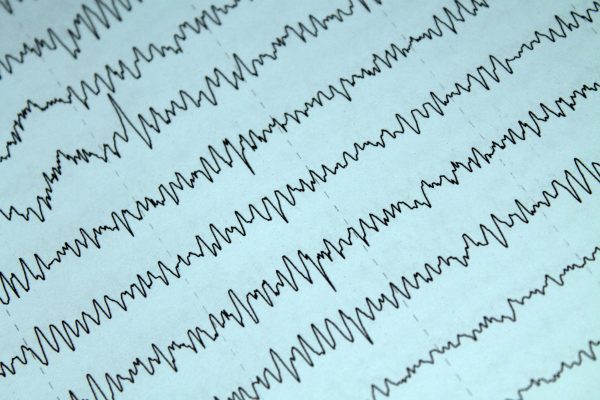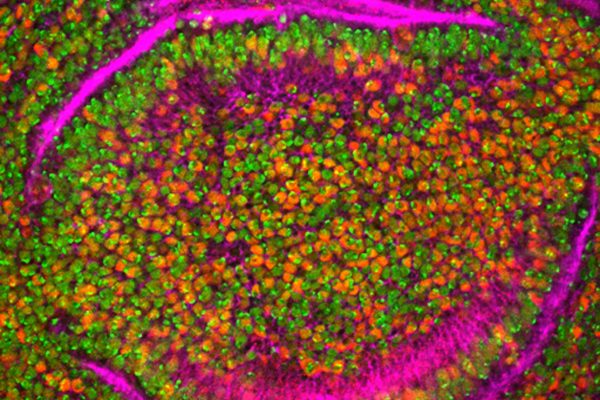By Riya Arul
In 1796, the concept of using viral antigen responses was first introduced to create vaccines that protect us from viruses such as smallpox; today, scientists at UCSF have been able to utilize the same concept to enhance our understanding of malignant brain tumors.
Gliomas, or glioblastomas, are brain tumors characterized by the abnormal and rapid growth of glial cells. Known as the “glue” of the nervous system, glial cells bind and support nerves so that they can function properly. However, it is when these glial cells begin to grow and divide uncontrollably that they can progress into malignant stage 3 or 4 glioblastomas. Past research has suggested that this rapid progression of glioblastomas, like many other tumors, is primarily catalyzed by certain genetic variations in the human leukocyte antigen (HLA) regions of cancerous cells. Acting as the cell’s personal “security system,” HLA regions play integral roles in the immune response of cells by invoking attacks upon foreign molecules. Hence, when there are certain genetic variations in the HLA regions, tumorous glial cells can easily bypass their radar and begin to uncontrollably divide.
Because of their crucial role in the intracellular immune response, studying HLA regions has provided scientists with a significant understanding of how humans responded to various viruses in the past. Given that they are both driven by genetic changes in the HLA region, many researchers began to investigate whether there was a potential connection between the immunogenetics of viral antigen responses and tumor development.
Since then, there has been over a century’s worth of studies using HLA regions to link viruses to cancer and even universal acknowledgment of seven possible oncoviruses — Epstein-Barr Virus (EBV), hepatitis B virus (HBV), human papillomavirus (HPV), human T-lymphotropic virus-1 (HTLV-1), hepatitis C (HCV), Kaposi’s sarcoma herpesvirus (HHV-8), and Merkel cell polyomavirus (MCV). However, despite gliomas being the most common form of central nervous system tumors, little to no research has been done directly linking them with these antigen response profiles.
Determined to alleviate this gap in glioma research, Dr. Geno Guerra (Ph.D.) and his team at the UCSF Department of Biostatistics, Epidemiology, and Neurological Surgery, conducted a study in which they predicted whether there would be significant genetic viral antibody responses, or specific genetic reactivity scores (GRS), to the seven named oncoviruses. They then decided to correlate the GRS with glioma risk overall as well as between subtypes and variants using preexisting data.
The team first analyzed three glioma case-control sets using glioma cases from UCSF Adult Glioma Study, Mayo Clinic Glioma Study, and the Cancer Genome Atlas as well as cancer-free controls from the 1958 British Birth Cohort and UK Blood Service control groups. It is important to acknowledge that the genome analyses were restricted to individuals of predominantly European descent, meaning that any correlations found can only be directly associated with this ethnic group of individuals. In addition, the study purely analyzed the genetic component of viral antibody response. Dr. Guerra clarifies, “In no way does this study imply viral infection or assume any participant has ever even been exposed to the virus…[making] any association driven by genetics, which is a unique take on current viral-cancer research.” To calculate the GRS of each individual in the data sets, the team analyzed the measure of immunoglobulin G (IgG) antibody response. Because it is both an antibody and a stable biomarker, IgG made an excellent pinpoint for calculating the GRS of each member. Finally, the team compared these GRS values with subtype-specific glioma susceptibility and survival using preexisting data for subjects to identify any statistically significant correlations.
The results of the study were striking, to say the least. With a higher GRS for the EBV ZEBRA virus associated with a decreased risk of the IDH-wild type glioma, the study revealed there to be a similar increased HLA-produced immune response for both the EBV ZEBRA and IDH-wild type protein structure. On the other hand, higher glioma risk was associated with higher GRS scores for the MCV virus revealing that the HLA-induced immune responses to viruses such as MCV did not seem to correspond to further immune protection for those with the IDH-wild type. But what exactly do these correlations in immune responses mean for the future of glioma research and the lives of glioma patients? “Gliomas are one of the most deadly cancers…[yet] not a lot has changed in terms of patient outcomes, survival just has not improved in a very significant way,” states Dr. Guerra. Given that radiation therapy and maximal resection surgery are the only main two treatment options for stage 3 and 4 glioma patients, the results of this study offer a chance for clinicians to identify particular immune traits to provide more effective treatment options that are unique to individual patients. Perhaps more importantly, the study emphasizes the use of GRS, a method that Dr. Guerra assures is “in no way limited to gliomas…and [can be] directly applicable for [studying] any cancer or diseases of interest.” By maximizing the potential of modern immunogenetics, biostatistics, and neurology, Dr. Guerra and his team have painted an optimistic future for not only the field of glioma research but also that of various other tumors.







